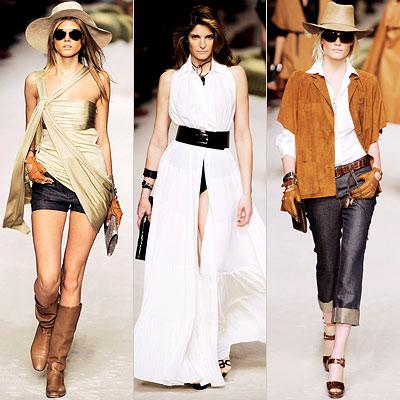
Fashion in Paris: on and off the runway
From a very young age my mother instilled in me a certain logic, if you can call it that. There were clothes that could be worn to school, to friends houses, out to dinner and to events and then there were what she called “play clothes” – clothes for lounging around the house, playing outside or engaging in any kind of athletic activity. The two were not to overlap. From the moment I would get home from school I was told to go upstairs and change into my play clothes before doing anything else. I never found this to be unusual since the only time I would see my mother in anything but her play clothes (jeans, a sweatshirt and slippers) was when she would run errands or go out to dinner with my father on the weekends. It was an irritating rule but not something I perceived as abnormal.
Although I had many friends whose mothers did not maintain such an approach to dressing, I grew up buying into this notion that there was a time to get dressed up and a time to be comfortable. In my experience, this is very American. I didn’t realize how American it was until I came to Paris where looking good is an art form, an innate ability that we sartorially inferior beings lack. It goes far beyond good grooming and fashion sense and nowhere was this made more obvious to me than at the gym in Paris.
To a certain degree I can understand how looking good for your workout might contribute to a positive body image. I refuse to believe, however, that I should be spurned because I left the house in running shoes, stretchy yoga pants, a t-shirt and a trace of the previous night’s mascara. I’ve been a member of a fitness club since High School in a culture where, unless you go to the gym straight from work, you arrive in sneakers and fitness gear without thinking twice. This falls into the “play clothes” category of dressing. However, looking sporty in Paris is a major faux-pas, one that provokes looks of disdain steeped in judgment – as if I’m not only inferior but dowdy. What could be worse? The only context in which athletic-wear is permissible is for running outdoors but let’s be honest, this also confuses some Parisians. Why would anyone subject themselves to such sweaty torture?
I was immediately astounded by the get-ups women would sport to the gym, the majority of whom I would quickly learn were either stay-at-home trophy wives or stay-at-home mothers. Even at 9:30 on a Sunday morning, these characters would show up to the gym in heels, skinny jeans or a skirt, a painted face and an aroma that could only come from half a bottle of perfume. All of this just to head straight into the locker room, gossip with their girlfriends, change (into what can only be considered inappropriate gym-attire) and, presumably, sweat off their liquid foundation.
When I head to the weight lifting room, the most demeaning place of all, where the smell of sweaty socks fills my nostrils and hits me like a brick, I am the outsider among virtually all men. Some hopelessly scrawny nerds, some beefed-up meatheads, some flirty homosexuals in short-shorts that leave little to the imagination and a lot of excessive staring. As a female, I breach the male-dominated muscle fortress the second I sit down on the hip-abductor machine. Because of this, these surly representations of French masculinity feel the need to comment on how I use the machines, remarking that muscles aren’t attractive on women and I should stick to cardio. Fortunately, I have learned not to take this personally and have concluded that French men are merely unaccustomed to seeing women with a little meat, muscles and tone (read: real women).
Yes, these seemingly bizarre clothing choices and social behaviors could be attributed to a difference in culture (didn’t their parents ever teach them not to stare and judge?) but it really speaks to a much larger issue in the Parisian gyms, the idea of spectacle and prestige. It’s all for show – the outfits, the blatant yearning for perfection, the condescension, the visual competition – a great number of these Parisians are not there to lose weight, get fit or stay healthy (besides, any health benefit is negated by smoking the moment they leave the gym) but to socialize and show off.
This approach to fitness wouldn’t necessarily be problematic if it weren’t for the scowls and looks that scream “you’re inferior, you don’t look good, you have no style.” I’m not sure which is worse, their occasional blatant disregard for my existence or the more frequent looks of revulsion.
Paris is not only the capital of fashion but of the thin ideal. Sure, it underwrites almost all messages diffused by American fashion media as well, but you can feel the yearning to be thin and stylish on and off the Paris runways. For the most part, the women don’t have “play clothes” because, well, you never know who you might run into on a quick trip to the market or pharmacy so looking your best is imperative. I’ve had to completely change my approach to dressing and I fear my American nonchalance is being quickly replaced by Parisian snobbism. But as much as I become more French in style, I will always follow my mother’s logic and wear my “play clothes” to the gym. I can handle the looks.

